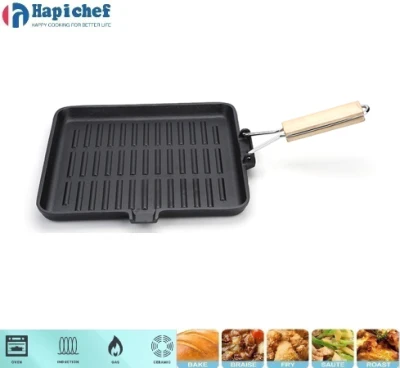cast iron pots and pans
The Enduring Appeal of Cast Iron Pots and Pans
When it comes to cookware, few materials possess the charm and versatility of cast iron. Cast iron pots and pans have been a staple in kitchens around the world for centuries, and their popularity shows no signs of waning. This enduring appeal can be attributed to a combination of their durability, heat retention, and unique cooking properties.
Cast iron cookware dates back to ancient times, with its origins traced to China in the first century. However, it gained widespread popularity in the Western world during the 18th and 19th centuries. The robust nature of cast iron makes it an ideal material for cooking vessels. A well-maintained cast iron pot or pan can last a lifetime, often becoming an heirloom passed down through generations. This longevity is partly due to the material's resistance to warping and scratching, making it a reliable choice for both novice and experienced cooks.
One of the most significant advantages of cast iron cookware is its excellent heat retention and even heating capabilities. Once heated, cast iron distributes heat uniformly across its surface, which is crucial for cooking techniques such as searing, sautéing, and baking. This characteristic allows for perfect browning of meats and even cooking of delicate dishes, making cast iron an essential tool in the kitchen. Furthermore, it can be used on various heat sources, including stovetops, ovens, and even open flames, making it incredibly versatile.
cast iron pots and pans

Maintaining cast iron pots and pans is also relatively straightforward, although it does require some attention. Unlike non-stick pans that can wear out or become scratched, cast iron develops a natural non-stick surface when properly seasoned. Seasoning involves coating the cookware with a thin layer of oil and heating it to allow the oil to penetrate the surface, creating a protective layer that enhances its cooking performance. This process not only improves the non-stick quality but also adds to the flavor of the food prepared in it, as the cookware becomes better over time with regular use.
Another noteworthy aspect of cast iron cookware is its contribution to healthier cooking. Cast iron can leach small amounts of iron into food, which can be beneficial, especially for individuals with iron deficiencies. Additionally, because cast iron can withstand high temperatures, it encourages the use of less oil when cooking, leading to healthier meal options.
While cast iron cookware was once primarily associated with rustic cooking, it has seen a resurgence in modern kitchens. The aesthetic appeal of cast iron—its classic, rugged look—paired with the rise of interest in traditional cooking techniques, has made it a sought-after item for home chefs and culinary enthusiasts alike. Brands have innovated with colorful enamel-coated cast iron pots that appeal to a broader audience, blending functionality with contemporary design.
In conclusion, cast iron pots and pans are much more than mere cooking utensils. They symbolize a cooking tradition that values durability, versatility, and flavor. Their ability to withstand the test of time speaks volumes about their craftsmanship and utility. Whether you’re a seasoned chef or a budding home cook, investing in a cast iron skillet or Dutch oven is a decision that pays dividends in both the kitchen and the dining table, making it a cherished tool in any culinary journey. As we continue to cook and create, the humble cast iron pot remains an enduring symbol of culinary excellence.
-
Why Every Kitchen Needs a Casserole Cast Iron DishNewsJun.24,2025
-
Experience the Tradition and Quality of Cast Iron CookwareNewsJun.24,2025
-
Double Sided Cast Iron Grill PanNewsJun.24,2025
-
Cast Iron Dutch Ovens You’ll Actually UseNewsJun.24,2025
-
Buy Cast Iron Griddle for Everyday CookingNewsJun.24,2025
-
Barbecue Iron Grill Cooking PowerNewsJun.24,2025
-
Standard Product Lines from Cast Iron Cookware SuppliersNewsJun.11,2025
